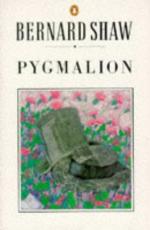|
This section contains 3,842 words (approx. 13 pages at 300 words per page) |

|
SOURCE: Reynolds, Jean. “Deconstructing Henry Higgins, or Eliza as Derridean ‘Text.’” In Shaw: The Annual of Bernard Shaw Studies 14 (1994): 209-17.
In the following essay, Reynolds deems the power of language to be the main theme in Pygmalion and links the ideas of Shaw and the French linguist Jacques Derrida.
Language is central to Bernard Shaw's Pygmalion: scarcely a minute of the play is without some reference to words. The plot is built around a phonetics experiment, and two of the main characters are language experts. Act II takes place amid speech paraphernalia—a phonograph and wax cylinders, a laryngoscope, and a life-size diagram of the vocal organs. The characters themselves are preoccupied with words: both Mrs. Pearce and Mrs. Higgins complain about Higgins's bad language, and Eliza insists that she cannot talk to him at all. The Eynsford-Hills are both appalled and fascinated by Eliza's “new small talk...
|
This section contains 3,842 words (approx. 13 pages at 300 words per page) |

|


